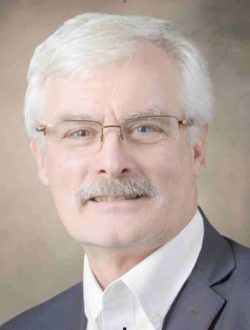Biography
Dr. Robert H. Caverly received his Ph.D. degree in electrical engineering from The Johns Hopkins University, Baltimore, MD, in 1983. He has been a faculty member at Villanova University in the Department of Electrical and Computer Engineering since 1997 and is a Full Professor. Previously, he was a Professor for more than 14 years at the University of Massachusetts Dartmouth. Dr. Caverly’s research interests are focused on the characterization of semiconductor devices such as PIN diodes and FETs in the microwave and RF control environment. He has published more than 100 journal and conference papers and is the author of two books, Microwave and RF Semiconductor Control Device Modeling and CMOS RFIC Design Principles from Artech House. An IEEE Life Fellow, Dr. Caverly is the current Editor-in-Chief of the IEEE Microwave Magazine and a member of the MTT-S AdCom, and was the General Chair of the 2020 IEEE Radio and Wireless Week.
Presentations
RF and Microwave Solid-State Control
A variety of semiconductor technologies is now available for RF and microwave control. This talk will address such control technologies as PIN diodes and FET-based elements and issues related to the choice of control technology for particular applications. Control design considerations will also be discussed.
RF Aspects of Magnetic Resonance Imaging
Magnetic Resonance Imaging (MRI) scanners are an important diagnostic tool for the medical practitioner. MRI provides a non-invasive means of imaging soft tissues and to obtain real-time images of the cardiovascular system and other dynamic changes in the human body. MRI scanners rely heavily on a number of topical areas of interest to Electrical Engineers: image processing, high speed computing and RF (radio frequency) systems and components. This presentation will focus on some of the RF aspects of the MR process and MR scanners. A primer on the physical phenomenon behind magnetic resonance will start the presentation and include a discussion of the origin of the MR signal. The need for the high static magnetic field (B0), the use of gradient coils for MR signal location, simple RF pulse sequences and how they are used in image construction will be covered. This MR image construction process and the control of the various steps that manipulate the atomic nuclei to generate the final MR diagnostic image put demanding constraints on RF equipment capabilities and these will be discussed, along with a high-level overview of the various components making up conventional MRI systems. This high-level overview will include a look at various examples of transmit and receive RF systems and examples of transmit and receive coils that make up MR scanners and system diagrams for both the RF transmit and receive paths. The talk with then narrow in scope to look at how these RF coils are modeled and controlled in both transmit and receive states and how these components are used for transmit/receive switching and patient and equipment protection.
